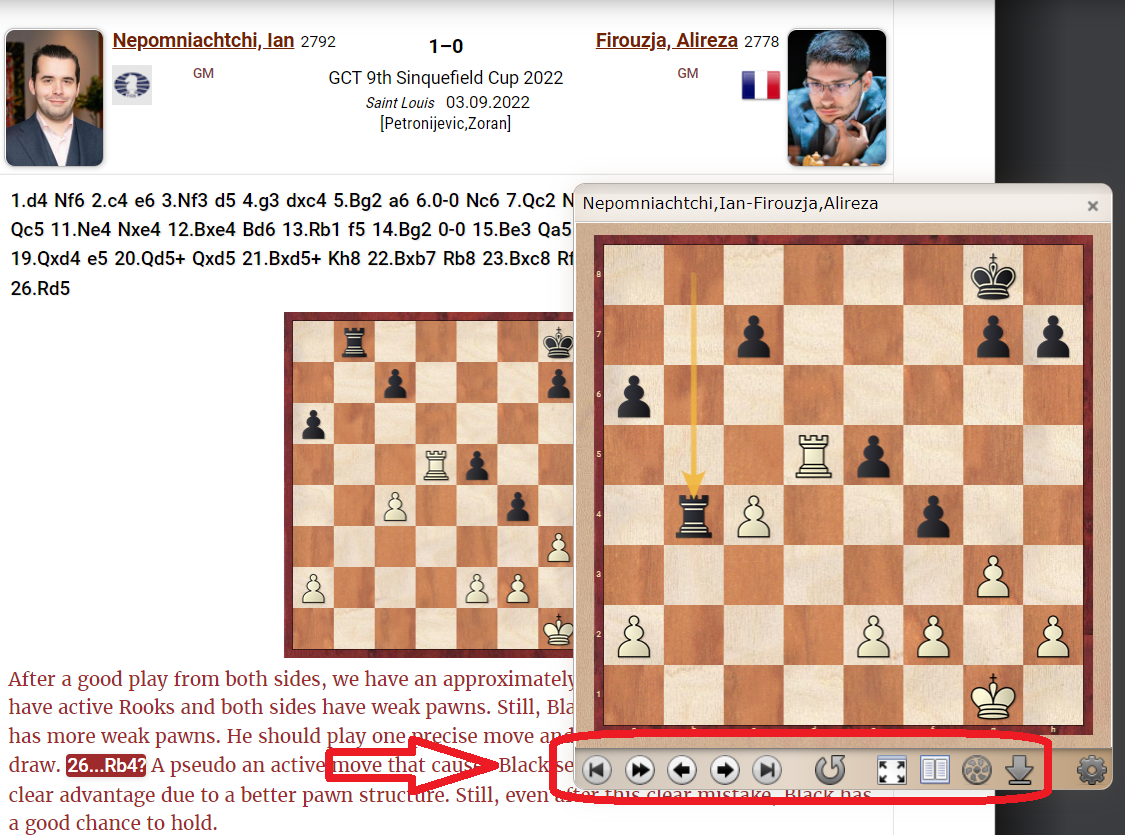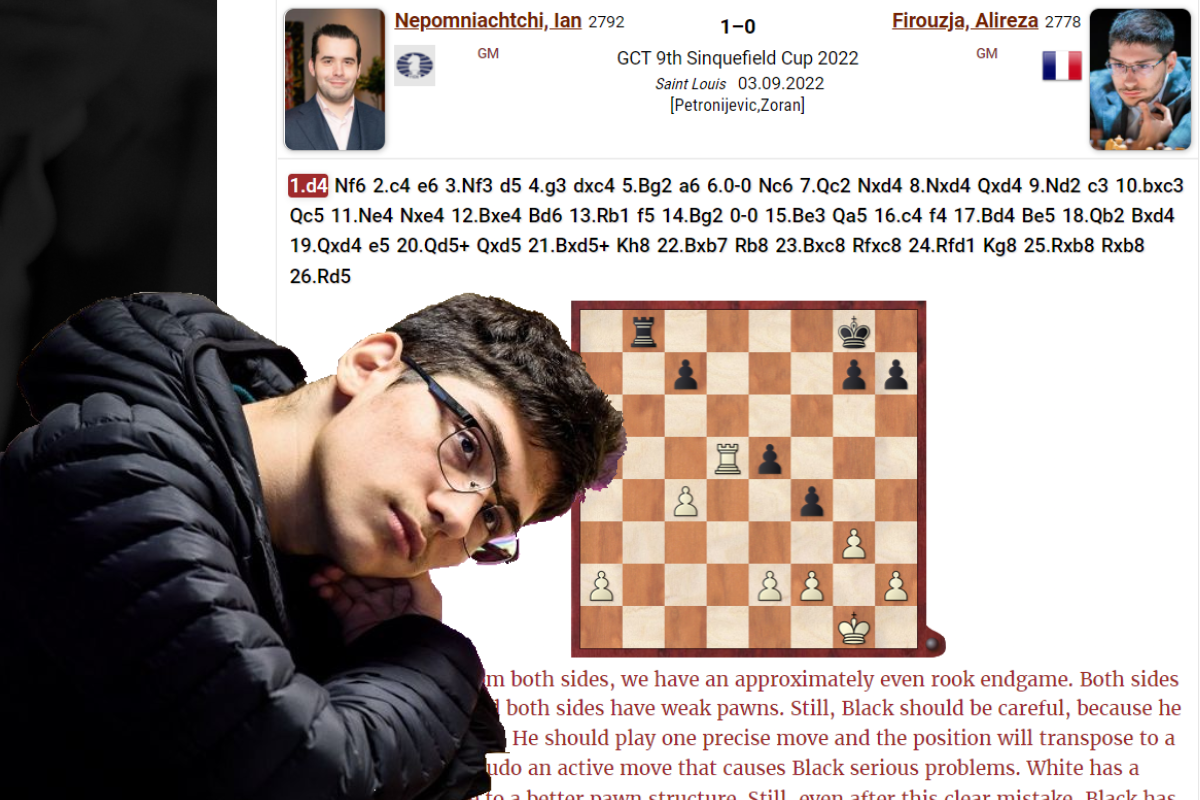Using the active notation
You might be inclined to believe the game notations below are either to be just looked at and the moves played through in your mind. But as most of you know you can click on the moves to get a separate replay board, which you can resize and move to the best place on your screen. The popup board has full controls, and you can use the navigation buttons to advance the moves, as well as use an engine or save the game or position to your computer. In the engine window you can ask for multiple lines, or what the threat is, or see the positional evaluation of the position.

Punishing passiveness
They say all rook endgames are drawn, but this truism is put to the test day in and day out by even the best players in the world. In the following quite equal endgame, Nepomniachtchi punishes Firouzja's passive approach to the position with merciless strokes that become a masterclass in rook endgame play.
Don't judge a book by its cover
Visually, the opening diagram for the endgame has to look not a little frightening for Black. White has two advanced connected passed pawns, the king next to them for support, and Black's king is in the crosshairs, but appearances can be deceiving as both GM Sadhwani and Karsten Mueller demonstrate.
In over 4 hours in front of the camera, Karsten Müller presents to you sensations from the world of endgames - partly reaching far beyond standard techniques and rules of thumb - and rounds off with some cases of with own examples.
Knightmare
The classic fight between knight and bishop should have ended in a draw with more than one path to equality. Perhaps the most astonishing analysis is how a trip to the corner by the knight was also a possibility, but the magic is in how it pulls this trick off. The real lesson here: any move can be possible so long as there is a solid plan behind it.
Battle of the Zwischenzugs
This cute finale starts with black and white trying to outfinesse each other, but the deciding zwischenzugs by each player end in Black's favor. A very pretty sequence to wrap things up.
Here are all the above endgames in our traditional player:
























